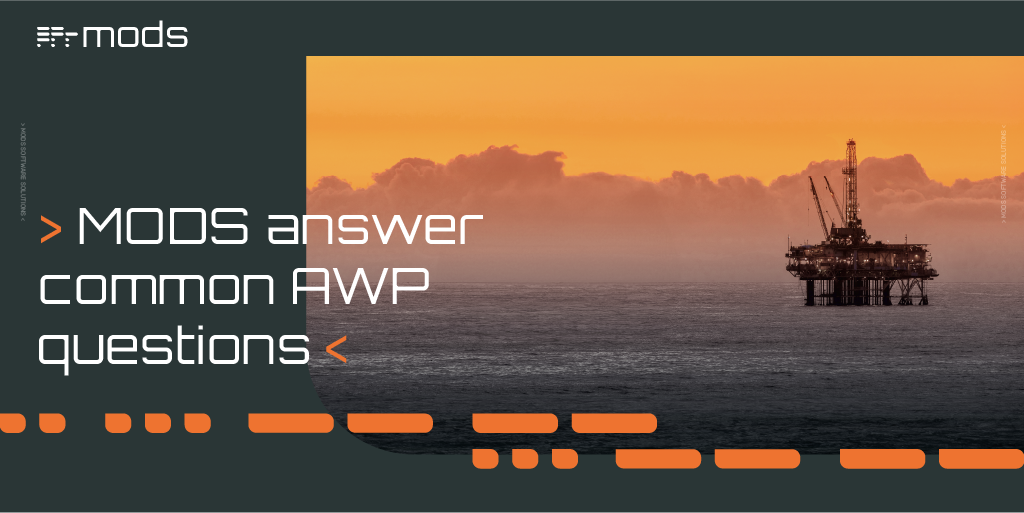Digital Completions in Plant Modifications and Upgrades
Unlike greenfield or any new build construction projects, plant modifications and upgrades present a unique set of challenges. Work is carried out...
3 min read
 Lisa De Vellis, PE
:
Apr 24, 2024 11:00:00 AM
Lisa De Vellis, PE
:
Apr 24, 2024 11:00:00 AM

MODS develop award-winning Advanced Work Packaging (AWP) tools and work alongside global partners to deploy AWP on everything from mega-projects to brownfield sites.
Learning from experience helps in the success of future AWP applications. In this article, we share our AWP experience – earned through developing and implementing AWP tools and methodology – to help accelerate the successful uptake and optimization of AWP in your projects.
Note: to facilitate understanding of the below 10 Lessons for Successful AWP Implementation, give yourself a refresher in understanding work packs. Also, a list of useful AWP acronyms can be found here.
Here are our ten lessons for successful AWP implementation:
Many barriers to successful project execution are upstream processes. For example, not being able to access the necessary documentation and/or materials required at the start of fabrication can be one of the first dominoes to fall.
Constraint-free project execution is a hallmark of AWP. For projects that remain both on schedule and on or under budget, AWP processes and tools ensure that documents are in order, and easily accessible, as-and-when required. Likewise for materials.
Getting held up at the fabrication stage creates a domino effect of work front delays and wasted resources. To avoid this, apply AWP guiding principles, which strengthen insights around the initial estimation of project schedules and logistics.
Monitoring and controlling engineering deliverables mitigate a major constraint in Installation Work Packs (IWPs). When engineering deliverables are properly controlled, their release by the Construction Work Package (CWP) stage will not contribute to delays in IWP planning and execution.
If the scope of the CWP is properly defined under the Work Breakdown Structure (WBS), it remains possible to proceed with the IWP. So: control the CWP. It is, after all, a valuable data asset that outlines engineering deliverables.
Split engineering deliverables as much as possible to ease successor work face planning. Work face planning is where the CWP is decomposed into IWPs - do this around 3 months in advance.
As mentioned in Lesson 1 (Front End Planning), AWP is all about constraint-free project execution. To control materials for each IWP, the procurement status must also be controlled at the Tag level. For bulk materials, define the identification code and use it in the procurement status.
There may be a burdensome gap between the project Information Management (IM) requirement and AWP information requirement. Therefore, the simultaneous control of both AWP and IM data for the project is essential. Discuss the alignment of the required AWP information versus the IM data at an early project stage to avoid this troublesome information gap.
Projects may have the requirement to attach any and all relevant documents – such as those pertaining to engineering, safety, inspection and work method – to each IWP. Satisfying this requirement can be cumbersome for the workface planner when manually attaching the necessary documents.
It is important to define IWP attachments in the initial planning phase. Using a digital AWP platform, it is possible to auto-assign all documents to each IWP through the association of the Tag-Doc information in the digital Document Management System.
So much of successful AWP implementation boils down to the correct tools, data management and communication. A robust digital AWP platform includes, or is able to be connected to, a materials management database.
All materials should be attached to Tag/identification codes. Use these tags in both the procurement phase as well as during the IWP phase to integrate all materials information into the AWP platform for constraint management.
A reported challenge with AWP implementation has been to control the CWP number in P6 as an identified asset of activity. This is necessary to plan and control scheduling on P6, as well as feeding back the latest schedule to the AWP platform.
Successful integration between P6 and the project’s AWP platform will capture and align the most up-to-date schedule between the two systems. Ensure you select a digital AWP tool that is able to connect to P6 and any other archival systems in place.
For successful AWP implementation, predecessor IWP constraints must be captured. To do this, a “finish-to-start” work sequence is necessary for construction management. Applying this reverse, finish-to-start approach between IWPs enables an understanding of the latest work front for each WBS.
Assign a construction Person in Charge (PIC) to each IWP who is responsible for overseeing and managing construction status and progress. This will motivate the construction team to effectively manage each IWP.
Reporting construction status and progress based on IWP status will further encourage the construction team to utilize IWPs for controlling execution. The right digital AWP tool unifies and streamlines such communication.
With AWP, system turnover work such as system walkdowns can be considered as a work package. Using your digital work pack system, work packages are instantaneous, helping to plan the schedule, as well as to control the status and punches.
Implementing AWP doesn’t have to be intimidating. The results of this best practice is proven, with even early-stage implementation positively impacting productivity, cost, safety, predictability, quality and schedule.
As with adopting any new methodology and onboarding any new tools, proactive change management is essential to mitigate hurdles out of the gate. These 10 lessons learned for successful AWP implementation can help inform your preparation to facilitate your use of the AWP best practice approach and tools.
Learn more lessons on our free webinar
.png?width=601&height=201&name=Email_Header_AWP_New_CDT%20(1).png)

Unlike greenfield or any new build construction projects, plant modifications and upgrades present a unique set of challenges. Work is carried out...

Turnarounds and shutdowns are among the most critical—and stressful—phases in the management and operation of industrial assets. These planned...

Offshore decommissioning and asset retirement present significant logistical, regulatory, safety, fiscal and reputational challenges. The process of...

Here is a checklist of items to get Advanced Work Packaging (AWP) implementation off on the right footing. It is not a complete list but covers...

Advanced Work Packaging (AWP) has fast become best practice for industrial projects. Owner-operators increasingly stipulate to EPC contractors that...

Advanced Work Packaging (AWP) is a construction execution methodology that, in part, relies on the effective use of installation work packs (IWPs)....